Fix: Volume Mixer Won’t Open
On a Windows computer, the Speaker icon in the notification area can be used to control volume and other sound-related properties. Clicking on the Speaker icon reveals a master volume slider that controls the volume for the entirety of the Windows Operating System. Windows users can also individually set the volumes for each of the programs and applications running at any given time using the Volume Mixer. The bring up the Volume Mixer, you need to right-click on the Speaker icon in the notification area and click on Open Volume Mixer. Once you see the Volume Mixer, you can individually configure different volumes for each of the programs running on your computer.
Unfortunately, some Windows users have been experiencing a problem where right-clicking on the Speaker icon in the notification area and then clicking on Open Volume Mixer doesn’t actually bring up the volume mixer – instead, nothing shows up no matter how long an affected user waits. In some cases, users affected by this problem also report that clicking on the Speaker icon does not bring up the master volume slider and simply does nothing instead. This problem is seen on all currently supported versions of the Windows Operating System and, according to the earliest available reports, has been around since the days of Windows Vista.
Not being able to individually set the volumes for your programs and applications can be quite the bother. Thankfully, this issue can be fixed, and the following are some of the absolute most effective solutions that you can use to try and fix it:
Solution 1: Run an SFC scan
This problem can, in some cases, be caused by corrupted or otherwise damaged Windows system files. This is where the System File Checker utility comes in – SFC is not only capable of scanning Windows computers for corrupt or otherwise damaged system files but is also more than equipped to repair or replace any such system files that it finds. If you do not know how to run an SFC scan, you can use this guide to run an SFC scan on a computer running on the Windows 10 Operating System.
Solution 2: Restart the Windows Explorer process
In many cases, something as trivial as the Windows Explorer process running into a hiccup and ending up unresponsive can cause the Speaker icon in a Windows computer’s notification area to become virtually useless. Thankfully, though, restarting the Windows Explorer process is pretty easy and should take care of this problem in cases where it malfunctioning is the root of the problem. To restart the Windows Explorer process, you need to:
- Press Ctrl + Shift + Esc to open the Task Manager.
- In the Processes tab, locate the Windows Explorer process.
- Right-click on the Windows Explorer process and click on Restart.

- Once the process has been successfully restarted, try interacting with the Speaker icon and trying to open the Volume Mixer to determine whether or not the fix actually worked.
Solution 3: End the SndVol.exe process
The SndVol.exe process is what the process behind the Volume Mixer utility shows up as in the Task Manager of a Windows computer. If the Volume Mixer isn’t opening up for you when you right-click on the Speaker icon and click on Open Volume Mixer, there is a chance you might be able to resolve the problem by ending the SndVol.exe process and then trying to open the Volume Mixer. To apply this solution, you need to:
- Press Ctrl + Shift + Esc to open the Task Manager.
- In the Processes tab, locate the SndVol.exe process.
- Right-click on the SndVol.exe process and click on End task.
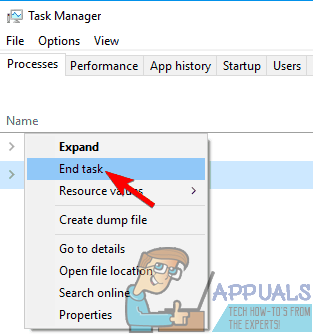
- Close the Task Manager.
- Right-click on the Speaker icon in the notification area and click on Open Volume Mixer, and see if the Volume Mixer actually shows up this time.
Solution 4: Make sure the Windows Audio service is running
A leading cause of this issue is the Windows Audio service, a service on Windows computers that is responsible for basically every audio-related, not running for some reason. If that’s the case, all that needs to be done to resolve the problem and successfully open the Volume Mixer is make sure this service is running. To ensure that the Windows Audio service is running, you need to:
- Press the Windows Logo key + R to open a Run dialog.

- Type services.msc into the Run dialog and press Enter to open the Services manager.
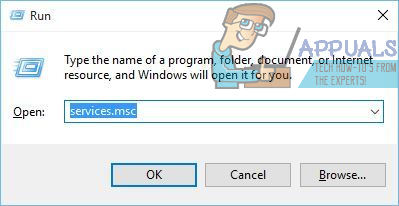
- Scroll down the list of services and locate the Windows Audio service.
- Double-click on the Windows Audio service to open its properties.
- Click on the dropdown menu located directly next to Startup type: and click on Automatic to select it.
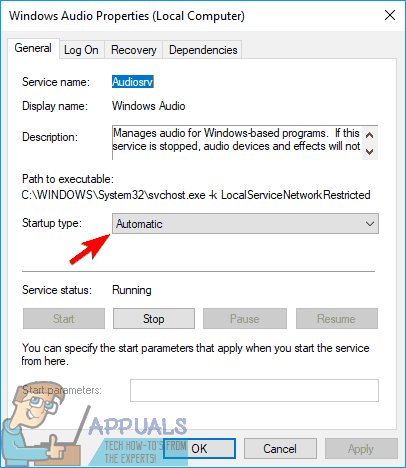
- Click on Stop to stop the service.
- Next, click on Start to start the service.
- Click on Apply and then on OK.
- Close the Services manager and check to see if the problem still persists.
Solution 5: Run the Hardware and Devices troubleshooter
The Hardware and Devices troubleshooter is a troubleshooter built-in to the Windows Operating System that is designed to look for and resolve a boatload of issues pertaining to hardware devices and their device drivers. Running the Hardware and Devices troubleshooter is a pretty decent idea when trying to deal with this problem. To run the Hardware and Devices troubleshooter, you need to:
- Open the Start Menu.
- Search for “troubleshooting“.
- Click on the search result titled Troubleshooting.
- Click on Hardware and Sound.

- Click on Hardware and Devices.

- In the troubleshooting wizard, click on Next and follow the onscreen instructions, all the way through to the end of the troubleshooter.
- After going through the entirety of the troubleshooter, check to see whether or not the problem has been resolved.
Solution 6: Update the drivers for your computer’s audio device
- Press the Windows Logo key + R to open a Run dialog.

- Type devmgmt.msc into the Run dialog and press Enter to open the Device Manager.

- In the Device Manager, double-click on the Sound, video and game controllers section to expand it.
- Locate the audio device your computer is currently using, right-click on it and click on Update Driver Software….

- Click on Search automatically for updated driver software.
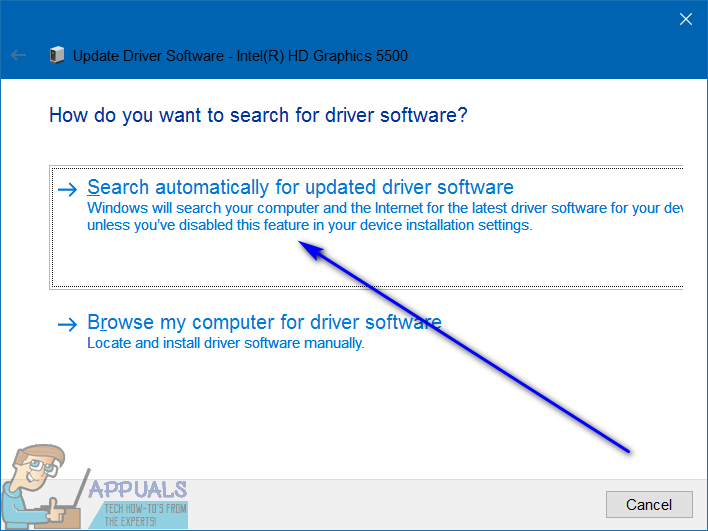
- Wait for Windows to automatically search for available updates for the audio device’s drivers.
- If Windows finds any available updated driver software, it will automatically download and install it and all you’ll have to do is wait for it to do so. If Windows does not find any available updated driver software, however, simply move on to a different solution.
- Once the drivers for the audio device have been updated, close the Device Manager and restart your computer.
- When the computer boots up, check to see if the issue still persists.
Solution 7: Uninstall (and then reinstall) your computer’s audio device
- Press the Windows Logo key + R to open a Run dialog.

- Type devmgmt.msc into the Run dialog and press Enter to open the Device Manager.

- In the Device Manager, double-click on the Sound, video and game controllers section to expand it.
- Locate the audio device your computer is currently using, right-click on it and click on Uninstall.
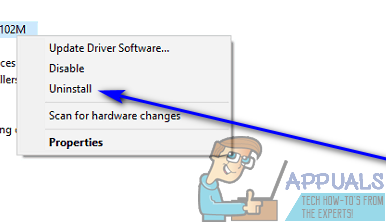
- Click on OK.
- Once the drivers have been uninstalled, click on Action > Scan for hardware changes. As soon as you do so, Windows will automatically reinstall your computer’s audio device.
- When the audio device has been reinstalled, try interacting with the Speaker icon in your notification area and try opening the Volume Mixer to see whether the problem has been fixed.